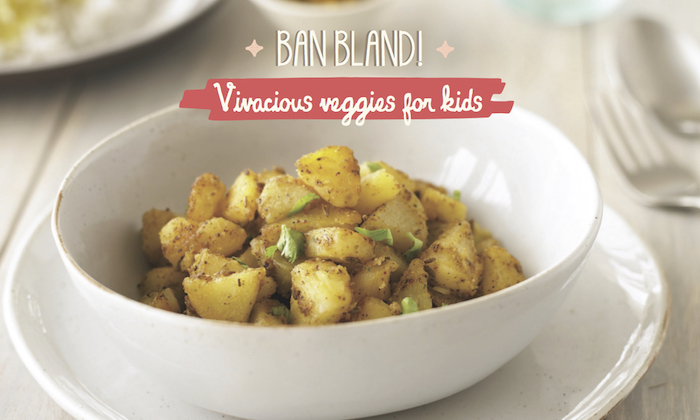
Want your little ones to eat their veggies? Namita from Indian Spicebox tells you why you should #BanBland!
While Sheryl Sandberg is busy promoting #banbossy I’ve been thinking I should embark on my own #banbland campaign! Especially when it comes to kids — I think we as parents are doing them a massive disservice by not spicing up their foods. And to clarify, spicing doesn’t refer to spicy! I’m not asking you to set their tongues on fire, but rather to delicately and delightfully flavour their food with the powerful spices that nature has so kindly given us.
Trust me when I say that those veggies limply hanging around in your fridge drawers are basically begging to be flavoured with spices!
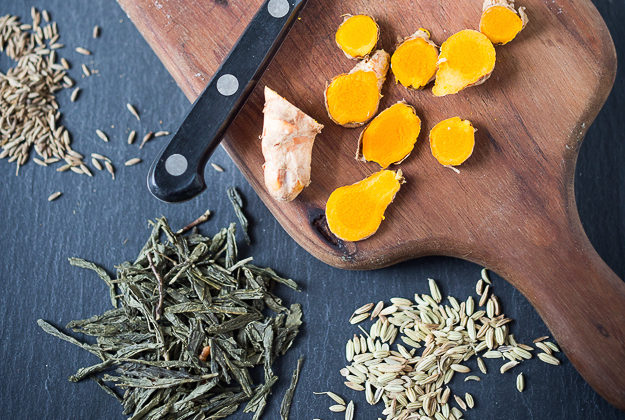
It’s powerful and flavourful spices like cumin and turmeric that can take something bland and boring into something delicious, colourful and divine. Consider spices to be the healthy cousin to butter and, just like butter, spices add flavour, richness and oomph… without the fat!
Never looked at spices this way? Well, look again.
The unassuming and slightly dull-looking cumin seeds can, in fact, turn green beans into something quite special. I’m convinced (no, in fact, I know) that if we treat all our lovely vegetables with some spice or another, our kids will be much happier eating their veggies! Because I’ve said this before, and I’ll say it again… kids crave flavour! And most since most kids fuss when it comes to vegetables, so by flavouring the vegetables… well, you get it right?
So which spices should we befriend in this land of bland vegetables?
First, let’s take a look at the humble cumin seeds.
They aren’t much to look at — no real taste or smell, but drop these babies into some hot ghee, wait for the sizzle and voila! You have the most beautiful, delicious, crunchy, aromatic spice that even promotes digestion. Add cumin seeds (browned in ghee) to cooked and seasoned potatoes, beans, cauliflower, or just about any sautéed veg and your little ones will be delighted. I like to tell my 3-year-old that the cumin seeds are bugs in his food… which because he’s a little boy, he happily gobbles up of course. Spices like cumin seeds do tend to have a distinct nutty flavour, and I’ve heard many folks say they don’t like cumin but I bet you the chances are, they’ve never experienced cumin until they were adults and so, as with many foods, the taste is too alien to them. This is another strong case for introducing kids to spices at a younger age; it opens up their palettes to be accepting to new and unique flavours and spices early on.
Turmeric: Simply sprinkle ¼ – ½ teaspoon of turmeric powder, along with salt, onto your veggies while sautéing in butter or ghee and mix well. Yes, this spice will turn your veggies yellow, but the taste is mild and more importantly the benefits are incredible. It’s a powerful anti-inflammatory and immunity builder, and much more.
Read more: Turmeric: Miracle Spice (and how to cook with it!)
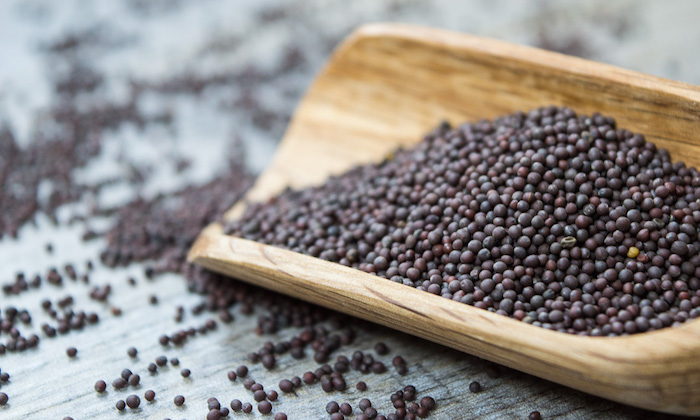
Mustard seeds: Typically used in regional Indian cooking (more so in the west and south of India), this mood-lifting spice is often combined with curry leaves and ginger. Start by heating a heaped teaspoon of ghee, add in ½ teaspoon mustard seeds, wait for the sizzle and pop, add in the optional curry leaves finely chopped or grated ginger and add in your veggies, sauté and add salt to taste. Delicious!
Ground Cumin and Coriander: A generous pinch of both these spices (they generally work well together) sprinkled over sautéed veggies should nicely do the trick! These spices should be freshly ground and stored in the freezer here in our hot and humid Singapore to preserve freshness. Did you know that most commercially produced large bags of coriander actually taste like sawdust? I recommend buying organic and in smaller quantities, or even better, freshly dry-roast (in a saucepan over heat) the coriander seeds at home and grind in a small coffee grinder or spice grinder.
Garam masala: This queen of North Indian spices is an aromatic and complex spice blend comprised of typically 6-8 whole spices such as cumin seeds, black pepper, cloves, cinnamon, green cardamom, black cardamom, and fennel seeds, roasted and ground up together. It’s a very heaty (not hot, but intense because of all the whole spices) spice, so a small pinch sprinkled over cooked veggies will work just fine for the kids.
![]()
Feeling inspired and ready to ban bland? Go ahead and have some fun with your spice box! Introduce your kids to the colors and flavours. Get them involved in sprinkling the spices over their food. Your vegetables will thank you, your kids’ tummies will love you and you’ll feel like a culinary genius in the kitchen! Who doesn’t want that?
Here is a fantastic veggie burger recipe… a perfect example of how spices can make things magical! You can even make mini burger patties and serve without the buns as a little snack or for the lunch box.
The Indian Spicebox Veggie Burger
2 large potatoes
1 tablespoon fresh or frozen peas
1 tablespoon fresh or frozen corn kernels
2 slices white or whole wheat bread, toasted and grated into bread crumbs (using a grater or food processor), or 1⁄2 cup dried bread crumbs
1 egg, lightly whisked
1 tablespoon finely chopped capsicum or bell pepper
3 tablespoons finely chopped baby spinach leaves
1 tablespoon grated carrot
1 tablespoon finely chopped fresh coriander
1⁄2 teaspoon salt
1⁄2 teaspoon cumin powder
1⁄2 teaspoon coriander powder
1–2 tablespoons oil, for frying 4 burger buns
1 tablespoon (15 g) butter, softened
Tamarind chutney
Green chutney, or use store-bought coriander chutney (just make sure there is no coconut in the ingredients)
1. Put the potatoes into a medium pot; cover with water and boil on high heat for 20 to 25 minutes, or until tender. Let them cool, then peel and mash.
2. Boil the peas and corn in a small pot of water for just 3 to 4 minutes on the stovetop or in a bowl of water for 5 minutes in the microwave. Drain and set aside to cool.
3. To the potato mash add the bread crumbs, whisked egg, boiled corn, peas, and all the other veggies. Add the fresh coriander, salt, and spices. Mix well, being careful not to overmash. Taste to adjust the spices and salt as necessary. It should be delicious at this stage even before cooking.
4. Divide the mixture into four equal balls. Roll each ball in your hand, and press into palm-size, flattish patties. Pat firmly, especially around the edges; place on a plate.
5. Once the patties are prepped, heat the oil in a nonstick frying pan or skillet. Fry the patties on medium heat, 3 to 4 minutes on each side, or until they’re a crisp golden brown. Transfer to a plate lined with kitchen paper to absorb the excess oil.
6. Assemble the burger: butter the buns and lightly toast, place the patty on the bun, and top with tamarind chutney and Green Chutney (page 65)—or you could mix equal quantities of chutney and mayo. Masala Onions (page 97), though not ideal for party situations , also taste great on this burger.
![]()
Namita is passionate about introducing spices to kids and their little palettes! She will be launching her new book for children, The Magic Spicebox, at the AFCC on Friday, 27 May at 11:30am at the National Library Level 1 Plaza. Her new book features spice poems delightfully paired with kid-friendly recipes. You may RSVP for the book launch here.

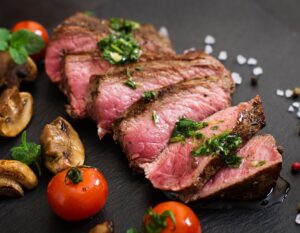




 View All
View All




 View All
View All










 View All
View All


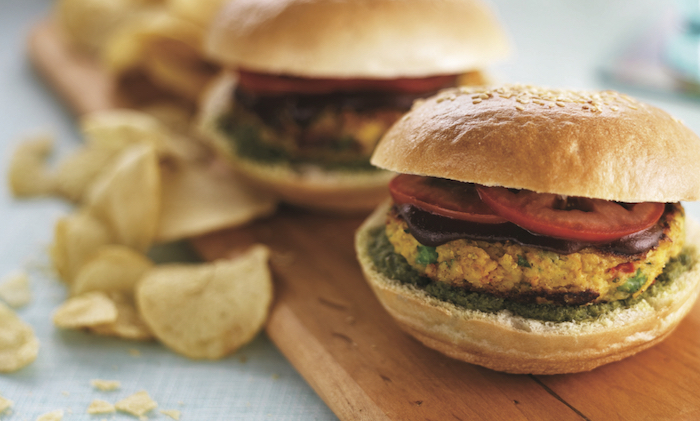

![[𝗡𝗘𝗪] 𝗣𝗮𝘀𝗶𝗿 𝗥𝗶𝘀’ 𝗕𝗿𝗼𝗻𝘁𝗼𝘀𝗮𝘂𝗿 𝗣𝗮𝗿𝗸 𝗶𝘀 𝗕𝗔𝗖𝗞. 𝗦𝗮𝗳𝗲𝗿 & 𝗙𝗨𝗟𝗟 𝗼𝗳 𝗗𝗶𝗻𝗼-𝗦𝗶𝘇𝗲𝗱 𝗙𝘂𝗻! 🦕🦖
A dinosaur you can climb into, a tail slide you can zoom down, and plenty of spots for kids to swing, bounce, and explore? Yeap, it’s a full-on dino adventure. After being closed for a major revamp, Brontosaur Park is now officially open (and safe!) for little adventurers to run wild.
Comment “DINO” or hit the link in bio for more epic outdoor playgrounds in Singapore!
𝗪𝗵𝗮𝘁 𝘄𝗲 𝗹𝗼𝘃𝗲:
- A Brontosaurus structure kids can explore from the legs to the belly
- A roller slide that goes right down the dino’s tail
- Rope bridges, climbing nets & hammocks between stego spikes = plenty of ways to burn off energy
- Toddler-friendly mini dino zone for the little ones
- Spot dino sculptures painted by residents (hidden all around the park)
𝗧𝗶𝗽𝘀 𝗳𝗼𝗿 𝗺𝗮𝘅 𝗳𝘂𝗻:
- Wear grippy shoes. Lots of climbing involved
- Pack snacks and water (There are minimarts nearby)
𝗪𝗵𝗲𝗿𝗲? The playground is located between Blk 777 & 778, along Pasir Ris St 71
𝗖𝗼𝘀𝘁? FREE!
.
.
.
.
.
#DinoPlaygroundSG #PasirRisPlayground #SgPlaygrounds #OutdoorFunSG #FreePlaygroundsSG #BrontosaurPark #SgFamilyAdventures #ThingsToDoWithKidsSG #SingaporeWithKids #PlaygroundGoalsSG #ToddlerPlaySG](https://www.sassymamasg.com/wp-content/plugins/instagram-feed/img/placeholder.png)
